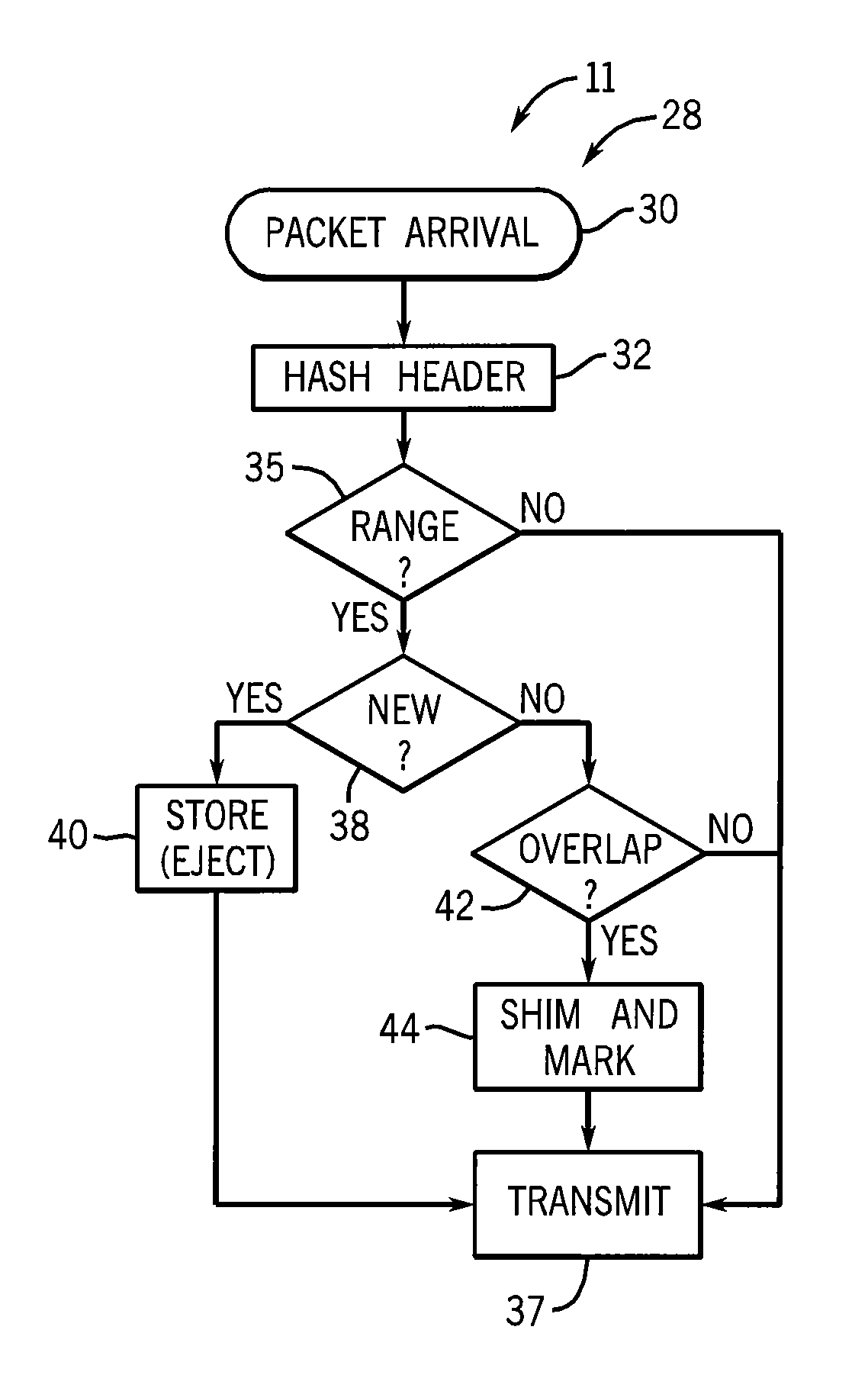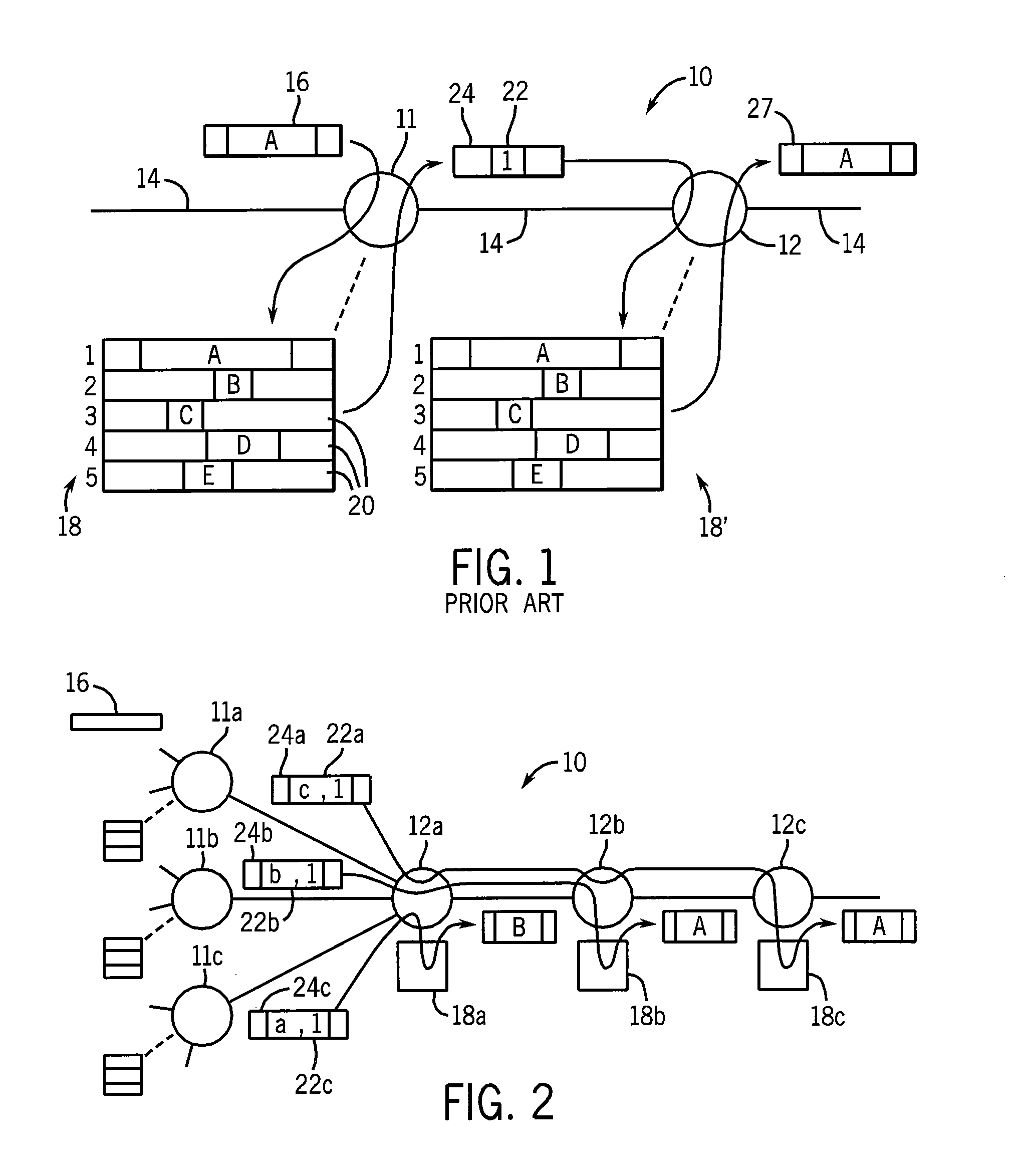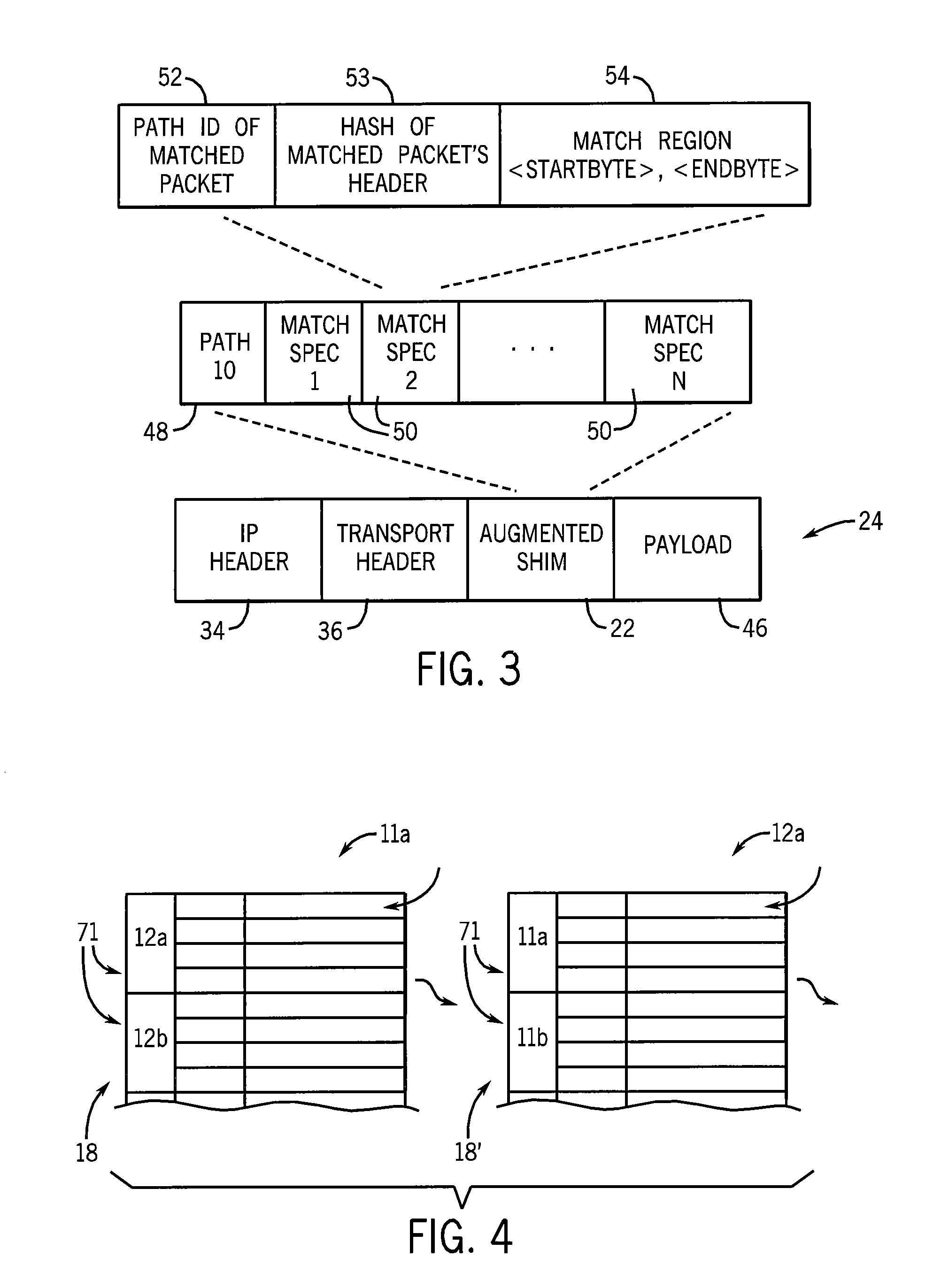Architecture and system for coordinated network-wide redundancy elimination
a network-wide redundancy and network architecture technology, applied in the field of computer networks, can solve the problems of processor speed or memory capacity, bandwidth limit, physical limitations of the media of the link between nodes, etc., and achieve the effect of improving network capacity, improving memory utilization, and improving performan
- Summary
- Abstract
- Description
- Claims
- Application Information
AI Technical Summary
Benefits of technology
Problems solved by technology
Method used
Image
Examples
Embodiment Construction
[0049]Referring now to FIG. 1, a network 10 may include a set of network nodes 11 and 12 interconnected by media 14 defining paths between nodes 12. The media may be, for example, electrical cable, optical link, or radio link or the like.
[0050]A packet 16 with redundant payload information may arrive at a compressing node 11 which reviews the payload against a cache table 18 holding payloads for antecedent packets 20 previously passing through node 11. Payload data of the packets 20 (or portions of that data) in common with the payload data of instant packet 16 (here represented by the letter A) may be identified by a search of the table 18 and this “redundant” data A removed from the instant packet 16 and replaced by a shim 22 to create a compressed packet 24. The shim 22 may include a logical index number (here represented by 1), such as a hash, identifying the redundant information (A) within the cache table 18.
[0051]The compressed packet 24 may be received by a decompressing nod...
PUM
 Login to View More
Login to View More Abstract
Description
Claims
Application Information
 Login to View More
Login to View More - R&D
- Intellectual Property
- Life Sciences
- Materials
- Tech Scout
- Unparalleled Data Quality
- Higher Quality Content
- 60% Fewer Hallucinations
Browse by: Latest US Patents, China's latest patents, Technical Efficacy Thesaurus, Application Domain, Technology Topic, Popular Technical Reports.
© 2025 PatSnap. All rights reserved.Legal|Privacy policy|Modern Slavery Act Transparency Statement|Sitemap|About US| Contact US: help@patsnap.com



